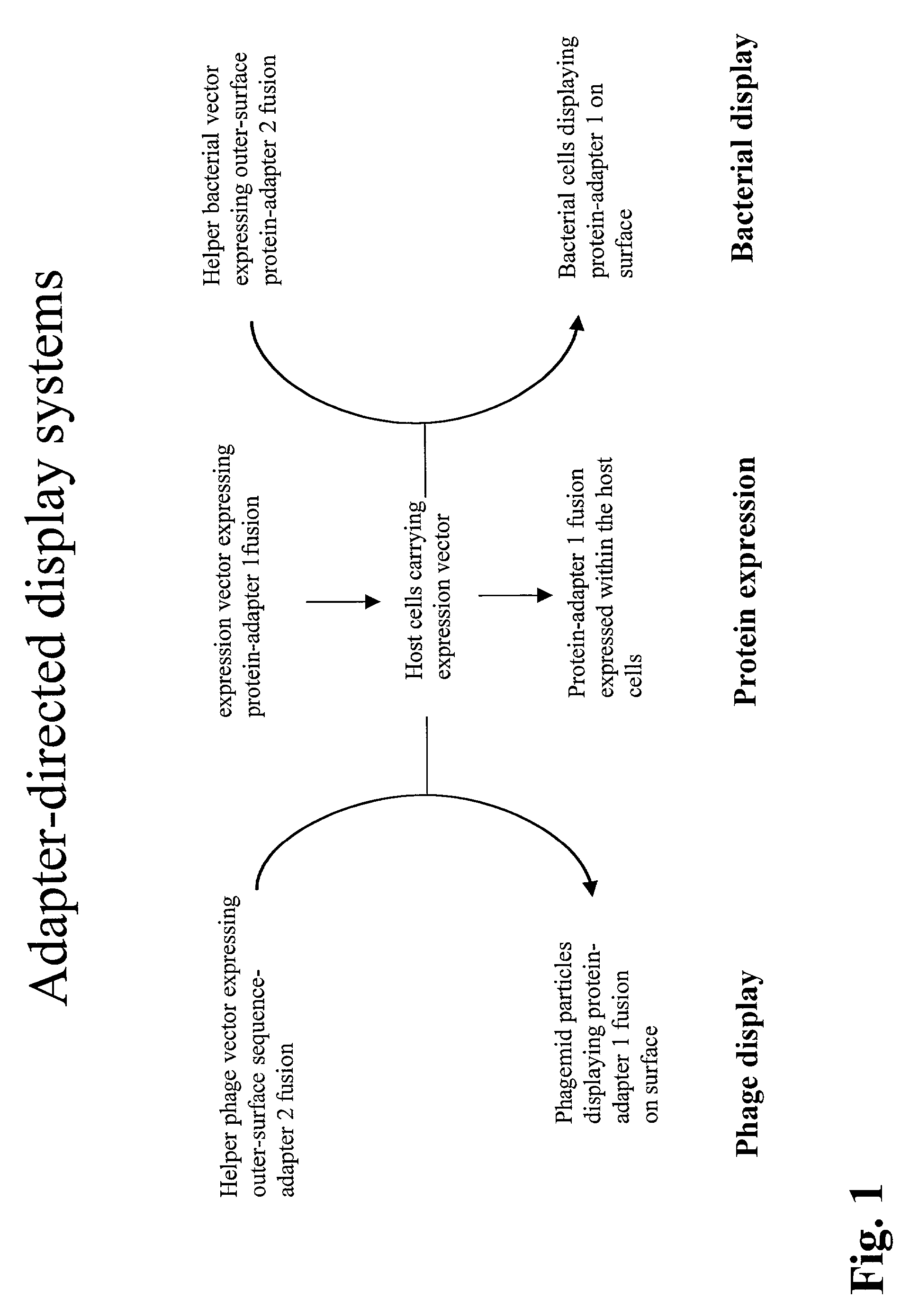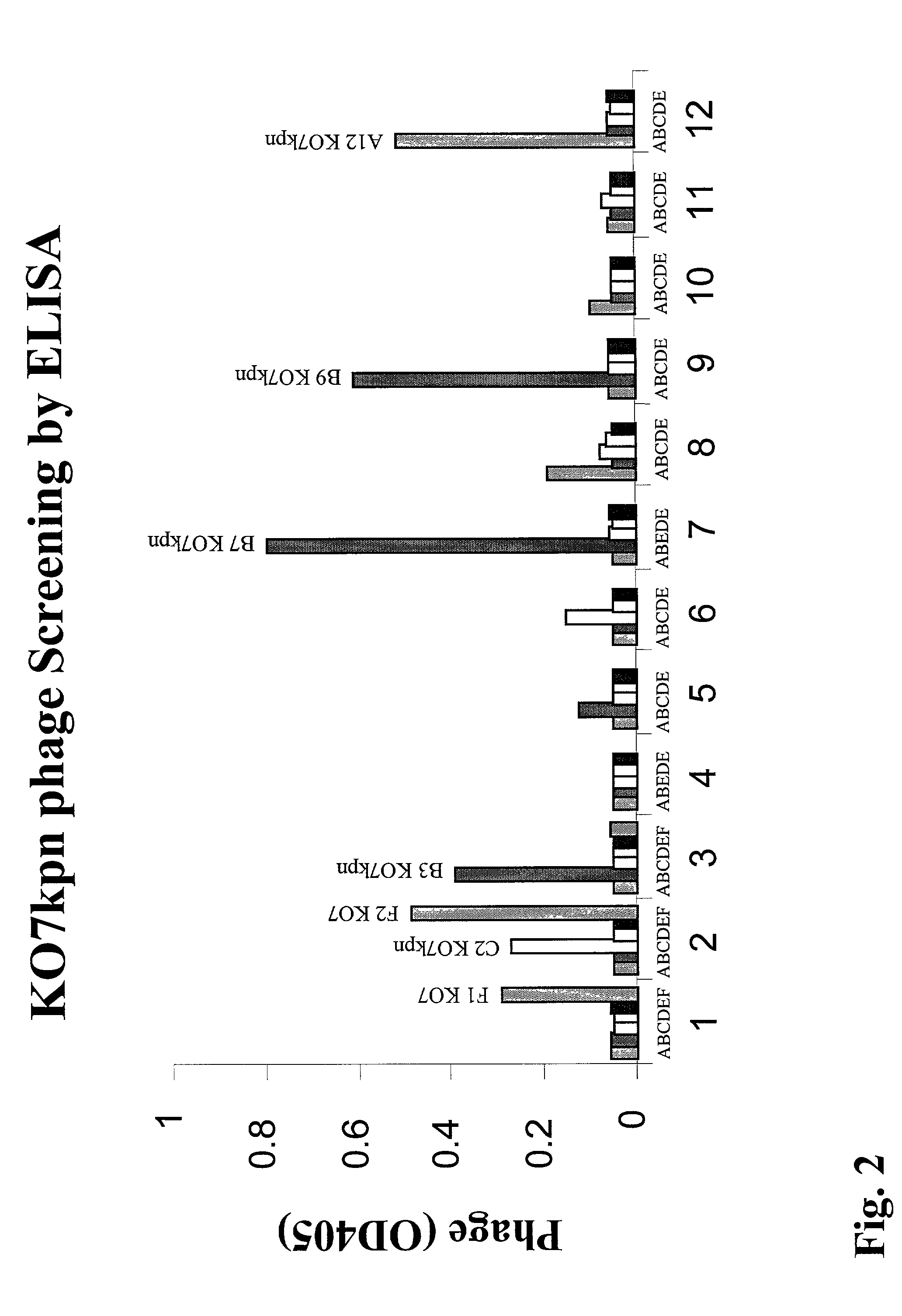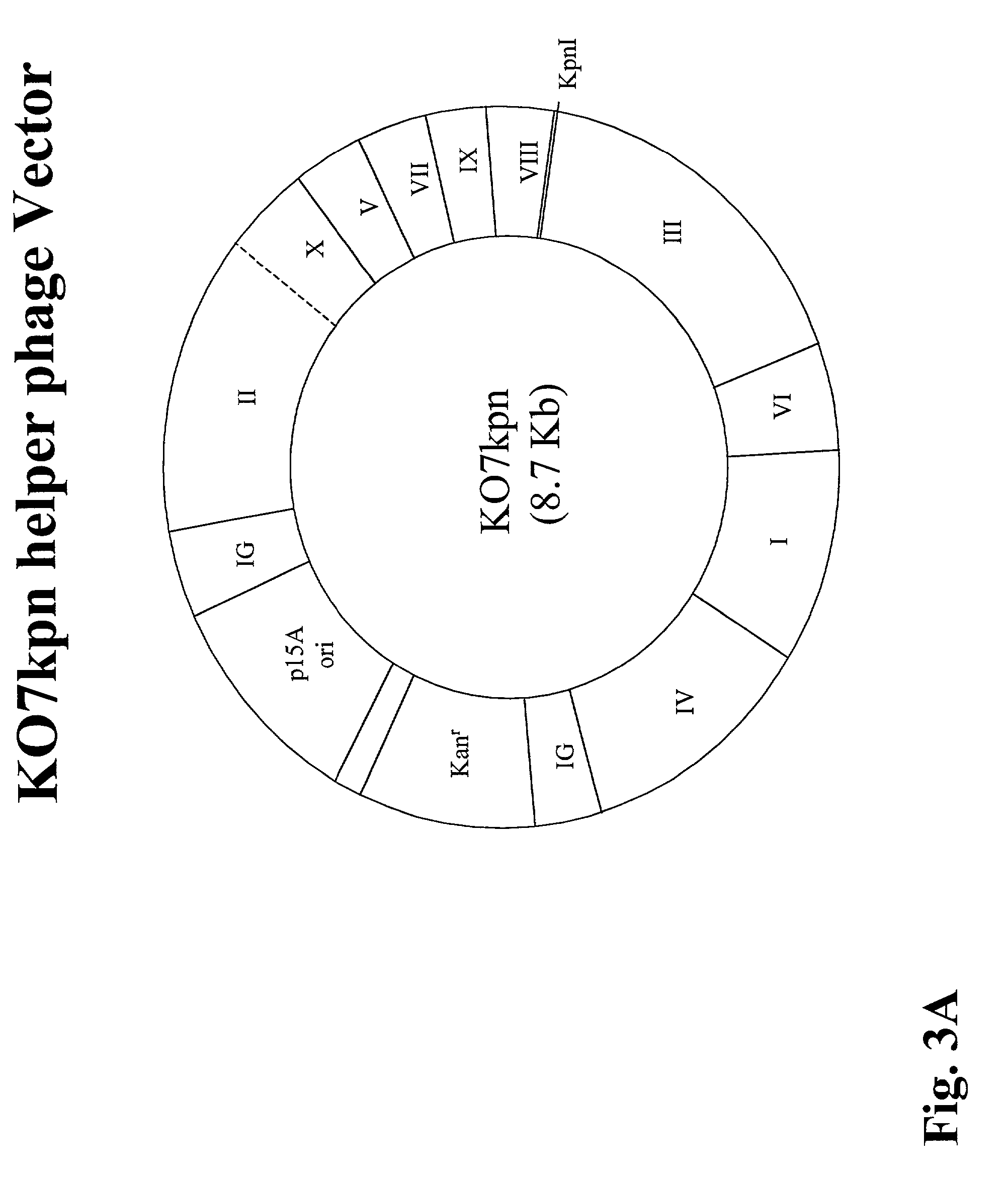Adapter-directed display systems
a display system and adapter technology, applied in the field of display technology, can solve the problems of limit the orientation of the proteins to be displayed, and achieve the effects of unprecedented flexibility, limitation of the orientation of the proteins, and high toxicity to the host cell
- Summary
- Abstract
- Description
- Claims
- Application Information
AI Technical Summary
Benefits of technology
Problems solved by technology
Method used
Image
Examples
example 1
Preparation and uses of KO7kpn Helper Phage
A. Construction of KO7kpn Vector:
[0204]The KO7kpn vector was constructed by modifying a well-characterized vector, namely M13KO7 (from Amersham Pharmacia) according to the procedure detailed below. The resulting vector is identical to KO7 except that a unique KpnI restriction site has been inserted into the gene III leader sequence without disrupting the gene III coding region (see FIGS. 3A and 3B).
[0205]The KpnI site was introduced into the gene III leader sequence of KO7 helper phage vector by PCR-based site-directed mutagenesis. The KO7 genome was amplified by PCR using the following primers which contain KpnI sites: p3KN1: 5′-TTTAGTGGTA CCTTTCTATTCTCACTCCGCTG-3′ (SEQ ID NO. 19) and p3KN2: 5′-TAGAAAGGTACCACTAAAG GAATTGCGAATAA-3′ (SEQ ID NO. 20). These primers share partial sequence homology to gene III leader sequence.
[0206]PCR was performed in a 100 ul reaction mixture containing 100 ng KO7 vector DNA, 20 pmol each of primers, 250 uM dN...
example 2
Preparation of an Adapter-Directed Display System Comprising GM-UltraHelper Phage Vectors
A. Construction of GM-UltraHelper Phage Vector:
[0213]The pABMC6 vector was constructed by replacing the sequence between the XbaI and BglII sites of vector pABMD1 (FIG. 22A) with a synthetic DNA fragment encoding a partial gene III leader sequence with a KpnI site, and coding sequences for GR2 domain (the coiled-coil domain of the human GABAB receptor 2) and Myc-tag (FIG. 4). The sequence for GR2-Myc domain was directly fused with the pIII coding sequence in pABMD1 vector, and was confirmed by DNA sequencing.
[0214]The GM-UltraHelper phage vector was constructed by replacing the KpnI / BamI fragment encoding a partial pIII leader (amino acid residues 11–19) and partial pIII protein (amino acid residues 1–197) in the KO7Kpn helper vector with the corresponding fragment encoding a partial pIII leader and the adaptor 2-pIII fusion protein from the pABMC6 vector. The resulting GM-UltraHelper phage vect...
example 3
Preparation of an Adapter-Directed Display System Comprising CM-UltraHelper Phage Vector
A. Construction of CM-UltraHelper Phage Vector:
[0221]The pABMC13 vector was constructed by replacing the sequence between the XbaI and BglII sites of vector pABMD1 (FIG. 22) with a synthetic DNA fragment comprising 5′ to 3′ a gene III leader sequence, a KpnI site, a coding sequence for Ala-Cys-Gly-Gly and a Myc-tag (FIG. 12). This synthetic sequence was linked in-frame with gene III in pABMD1 vector.
[0222]The CM-UltraHelper phage vector was constructed by replacing the KpnI / BamHI fragment encoding (amino acid residues 11–19) and partial p III protein (amino acid residues 1–197) in the KO7 Kpn helper vector with the corresponding fragment encoding a partial p III leader and the adaptor 2-pIII fusion protein from the pABMC13 vector. The resulting CM-UltraHelper phage vector (FIG. 13A) encodes an engineered pIII capsid fused with Cys-myc domain placed at the N-terminal of pIII. (FIG. 13B). In additi...
PUM
| Property | Measurement | Unit |
|---|---|---|
| physiological body temperatures | aaaaa | aaaaa |
| pH | aaaaa | aaaaa |
| temperature | aaaaa | aaaaa |
Abstract
Description
Claims
Application Information
 Login to View More
Login to View More - R&D
- Intellectual Property
- Life Sciences
- Materials
- Tech Scout
- Unparalleled Data Quality
- Higher Quality Content
- 60% Fewer Hallucinations
Browse by: Latest US Patents, China's latest patents, Technical Efficacy Thesaurus, Application Domain, Technology Topic, Popular Technical Reports.
© 2025 PatSnap. All rights reserved.Legal|Privacy policy|Modern Slavery Act Transparency Statement|Sitemap|About US| Contact US: help@patsnap.com



